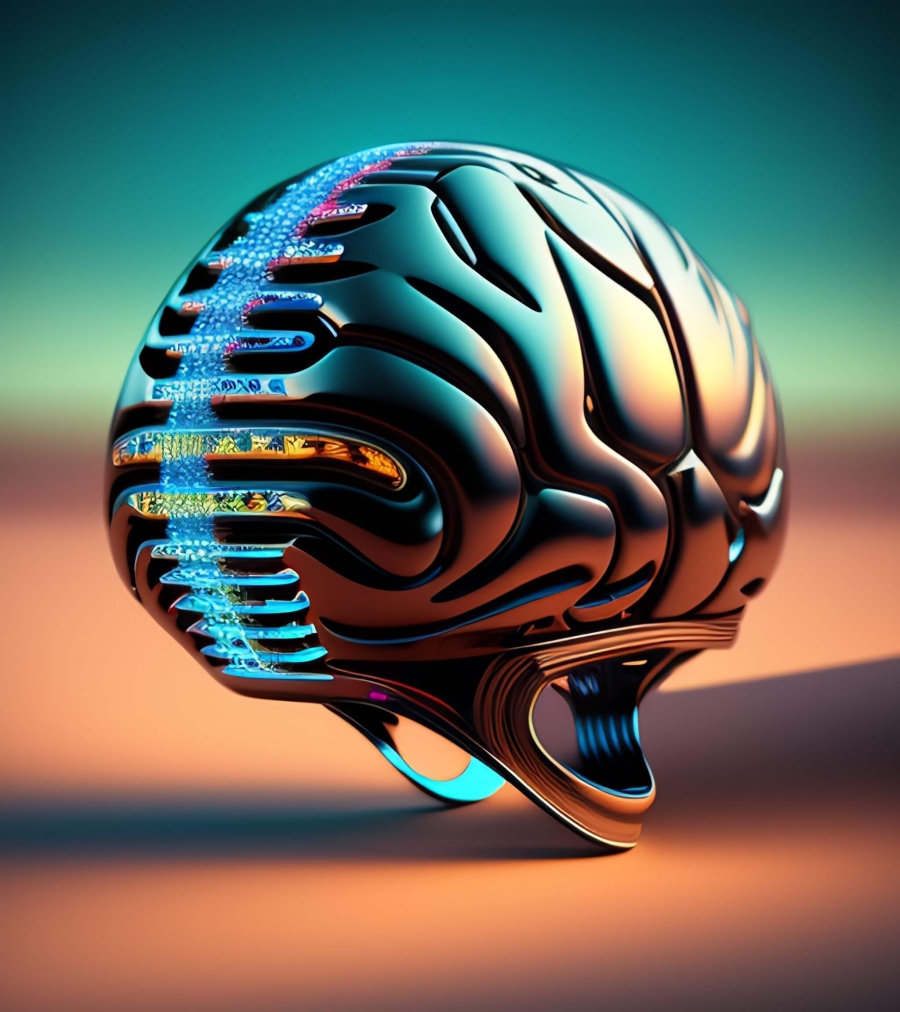How Does AI Work?
How Does AI Work?
AI, or Artificial Intelligence, is a fascinating field that has garnered significant attention in recent years. It encompasses the development of computer systems that can perform tasks that typically require human intelligence. From voice assistants and self-driving cars to personalized recommendations and advanced data analysis, AI has become an integral part of our daily lives. But have you ever wondered how AI actually works? In this article, we will delve into the intricacies of AI and explore its underlying principles, algorithms, and applications.
Table of Contents
1. Introduction
2. What is AI?
3. The Core Concepts of AI
1. Machine Learning
2. Deep Learning
3. Natural Language Processing
4. How AI Works
1. Data Collection and Preprocessing
2. Training the Model
3. Evaluation and Fine-Tuning
4. Deployment and Inference
5. Types of AI Systems
1. Reactive Machines
2. Limited Memory Machines
3. Theory of Mind Machines
6. AI Applications
1. Natural Language Processing in Chatbots
2. Computer Vision in Image Recognition
3. Recommendation Systems in E-commerce
4. AI in Healthcare
7. Challenges and Limitations of AI
1. Ethical Considerations
2. Lack of Transparency
3. Bias and Fairness Issues
8. The Future of AI
9. Conclusion
10. FAQs
1. Introduction
Artificial Intelligence refers to the development of computer systems that can mimic human intelligence and perform tasks that typically require human cognition. It involves the creation of intelligent machines capable of learning, reasoning, and problem-solving. AI systems are designed to analyze vast amounts of data, identify patterns, make informed decisions, and adapt to changing circumstances.
2. What is AI?
AI can be defined as the simulation of human intelligence in machines that are programmed to think and learn like humans. It encompasses a broad range of technologies, algorithms, and methodologies that enable machines to perceive, reason, and act intelligently. AI can be classified into two categories: Narrow AI and General AI. Narrow AI is designed to perform specific tasks, while General AI aims to replicate human-level intelligence across various domains.
3. The Core Concepts of AI
To understand how AI works, it is essential to grasp some of the core concepts that underpin its functioning. These concepts include Machine Learning, Deep Learning, and Natural Language Processing.
3.1 Machine Learning
Machine Learning is a subset of AI that focuses on enabling machines to learn from data and improve their performance without being explicitly programmed. It involves the development of algorithms that allow machines to recognize patterns, make predictions, and make data-driven decisions. Machine Learning can be further categorized into supervised learning, unsupervised learning, and reinforcement learning.
3.2 Deep Learning
Deep Learning is a subfield of Machine Learning that utilizes artificial neural networks to model and understand complex patterns and relationships within data. It is inspired by the structure and function of the human brain and is particularly effective in tasks such as image recognition, natural language processing, and speech recognition. Deep Learning has revolutionized several AI applications and has achieved remarkable breakthroughs in recent years.
3.3 Natural Language Processing
Natural Language Processing (NLP) focuses on enabling machines to understand, interpret, and generate human language. It involves the development of algorithms and models that facilitate communication between humans and computers in a natural and intuitive manner. NLP powers applications such as voice assistants, chatbots, and language translation systems.
4. How AI Works
AI systems typically follow a series of steps to process
data, learn from it, and make informed decisions. The key stages in the AI workflow include data collection and preprocessing, training the model, evaluation and fine-tuning, and deployment and inference.
4.1 Data Collection and Preprocessing
The first step in building an AI system is to gather relevant data that will serve as the basis for learning. This data can be collected from various sources such as databases, sensors, or user interactions. Once collected, the data needs to be preprocessed to remove noise, handle missing values, and ensure consistency. Data preprocessing also involves transforming the data into a format suitable for the learning algorithm.
4.2 Training the Model
In this stage, the AI model is trained using the preprocessed data. The model learns from the input data by identifying patterns, relationships, and dependencies. The learning algorithm adjusts the model's parameters iteratively to minimize the error or maximize the desired outcome. The training process involves feeding the data into the model, comparing its predictions with the actual values, and updating the model's parameters accordingly.
4.3 Evaluation and Fine-Tuning
Once the model is trained, it is evaluated to assess its performance and generalization capabilities. Evaluation involves testing the model on a separate dataset that was not used during training. Various metrics, such as accuracy, precision, recall, and F1 score, are used to measure the model's performance. If the model does not meet the desired criteria, further fine-tuning is performed by adjusting the model's architecture, hyperparameters, or training techniques.
4.4 Deployment and Inference
After the model has been trained and fine-tuned, it is ready for deployment. The AI system is integrated into the target environment, whether it's a web application, a mobile device, or an embedded system. In the inference phase, the deployed model receives new input data, processes it, and generates predictions or actions based on its learned knowledge. This real-time decision-making is the essence of AI applications in various domains.
5. Types of AI Systems
AI systems can be categorized into different types based on their capabilities and functionalities. Some of the common types are Reactive Machines, Limited Memory Machines, and Theory of Mind Machines.
5.1 Reactive Machines
Reactive Machines are the simplest form of AI systems that do not have the ability to store past experiences or learn from them. They analyze the current input and provide a response based solely on that input. These systems lack memory and cannot consider the context or history of the situation. Examples of reactive machines include chess-playing programs and recommendation systems that suggest products based on the current selection.
5.2 Limited Memory Machines
Limited Memory Machines, as the name suggests, have a limited memory that allows them to learn from past experiences to some extent. These machines can make decisions based on both the current input and a limited history of previous inputs. They can store and retrieve information from past interactions, enabling them to adapt their behavior over time. Self-driving cars and personal assistants like Siri or Alexa fall into this category.
5.3 Theory of Mind Machines
Theory of Mind Machines represents a more advanced level of AI that possesses not only memory but also an understanding of the mental states of others. These machines can infer the intentions, beliefs, and emotions of human agents, which enables them to engage in more complex social interactions. While Theory of Mind Machines are still largely hypothetical, they hold tremendous potential in fields such as psychology, sociology, and human-robot interaction.
6. AI Applications
AI has found widespread applications across various industries and domains. Let's explore a few notable examples of AI applications.
6.1 Natural Language Processing in Chatbots
Chatbots are AI-powered virtual assistants that can engage in conversations with
humans. Natural Language Processing techniques enable chatbots to understand user queries, extract relevant information, and generate appropriate responses. Chatbots are extensively used in customer support, helping businesses provide instant assistance and personalized interactions to their customers.
6.2 Computer Vision in Image Recognition
Computer Vision is a branch of AI that focuses on enabling machines to perceive and understand visual information. Image recognition, a prominent application of computer vision, involves the identification and classification of objects, scenes, or patterns in images or videos. This technology has diverse applications, ranging from facial recognition for security purposes to self-driving cars' ability to detect and interpret road signs and obstacles.
6.3 Recommendation Systems in E-commerce
Recommendation systems leverage AI algorithms to provide personalized suggestions to users based on their preferences, browsing history, and behavior. These systems analyze vast amounts of data to understand user preferences and patterns, enabling e-commerce platforms to offer tailored product recommendations. By suggesting relevant products or content, recommendation systems enhance the user experience and drive sales.
6.4 AI in Healthcare
AI has made significant advancements in the healthcare industry, revolutionizing areas such as medical diagnosis, drug discovery, and personalized medicine. AI-powered diagnostic systems can analyze medical images, such as X-rays and MRIs, to detect abnormalities and assist doctors in making accurate diagnoses. Machine Learning algorithms can also be used to predict patient outcomes, identify high-risk individuals, and optimize treatment plans.
7. Challenges and Limitations of AI
While AI holds immense potential, it also faces several challenges and limitations that need to be addressed.
7.1 Ethical Considerations
As AI becomes increasingly integrated into our lives, ethical considerations arise regarding privacy, bias, transparency, and accountability. It is crucial to ensure that AI systems respect user privacy, avoid discrimination, and operate in a fair and transparent manner. Addressing these ethical concerns requires a multidisciplinary approach involving policymakers, researchers, and industry stakeholders.
7.2 Lack of Transparency
Some AI models, especially complex Deep Learning models, lack transparency, making it challenging to understand how they arrive at their decisions. This lack of transparency raises concerns regarding trust and accountability. Researchers are actively exploring methods to enhance the interpretability of AI models, enabling users to understand the reasoning behind their decisions.
7.3 Bias and Fairness Issues
AI systems are trained on data that may contain biases, leading to biased outcomes and discriminatory behavior. For example, facial recognition systems have been shown to have higher error rates for certain demographic groups. Addressing bias and fairness issues requires careful data selection, diverse representation, and ongoing monitoring to ensure equitable outcomes.
8. The Future of AI
The future of AI holds tremendous possibilities. Advancements in AI research, coupled with increasing computing power, will likely lead to the development of more sophisticated and capable AI systems. We can expect AI to continue transforming industries such as healthcare, transportation, finance, and entertainment. However, it is crucial to strike a balance between innovation and addressing the ethical, societal, and economic implications of AI's widespread adoption.
9. Conclusion
AI has become an integral part of our lives, driving innovation and transforming industries. By harnessing the power of Machine Learning, Deep Learning, and Natural Language Processing, AI systems can analyze data, learn from it, and make intelligent decisions. From chatbots and recommendation systems to computer vision and healthcare applications, AI is making significant contributions across diverse domains. However, as AI continues to advance, addressing ethical concerns, ensuring transparency, and mitigating bias are critical for its responsible and beneficial deployment.
10. FAQs
Q1. What is Artificial Intelligence (AI)?
Artificial Intelligence refers to the development of computer systems that can perform tasks that typically require human intelligence. It involves creating
intelligent machines capable of learning, reasoning, and problem-solving.
Q2. How does AI work?
AI systems work by collecting and preprocessing data, training models using machine learning algorithms, evaluating and fine-tuning the models, and deploying them for real-time decision-making.
Q3. What are the core concepts of AI?
The core concepts of AI include Machine Learning, Deep Learning, and Natural Language Processing. Machine Learning focuses on enabling machines to learn from data, Deep Learning utilizes artificial neural networks for complex pattern recognition, and Natural Language Processing facilitates communication between humans and computers.
Q4. What are the different types of AI systems?
AI systems can be categorized into Reactive Machines, Limited Memory Machines, and Theory of Mind Machines. Reactive Machines respond based solely on current input, Limited Memory Machines have a limited ability to learn from past experiences, and Theory of Mind Machines can understand the mental states of others.
Q5. What are some applications of AI?
AI has applications in various domains, including natural language processing in chatbots, computer vision in image recognition, recommendation systems in e-commerce, and healthcare diagnostics and personalized medicine.









Comments (0)